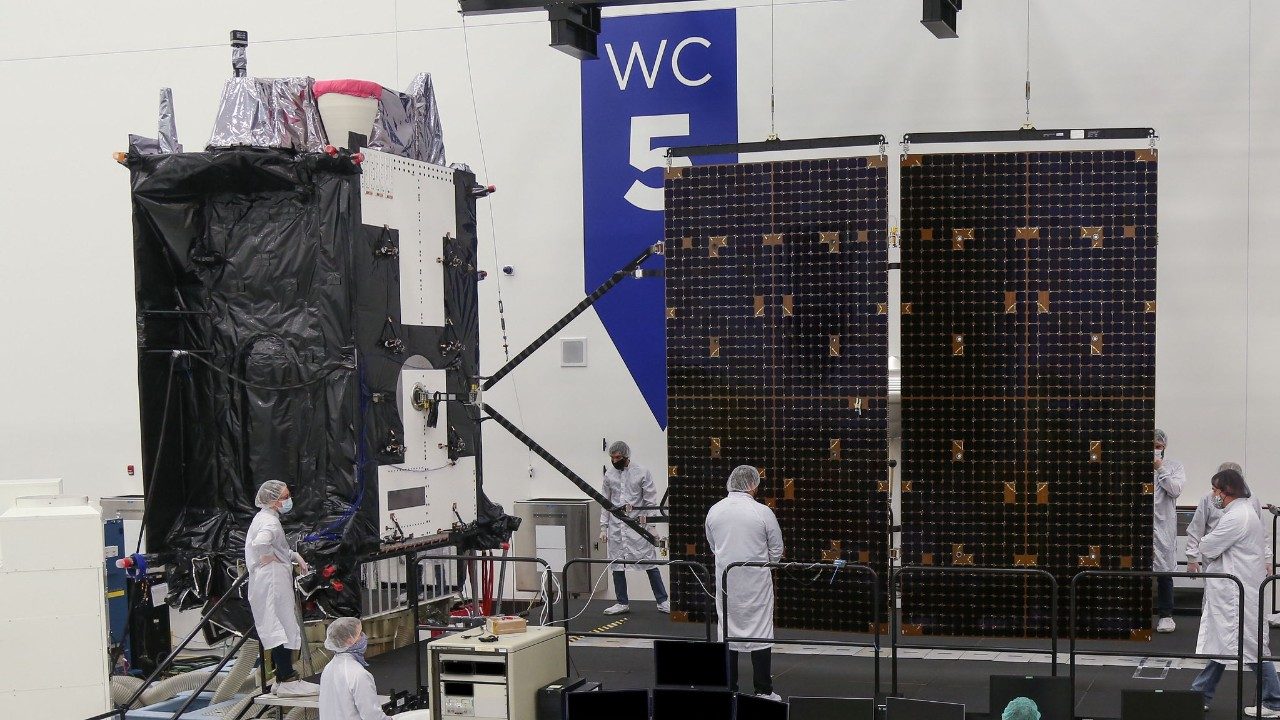When you call an Uber, send your friends a snapshot of your location, or use your phone to navigate to a nearby restaurant, what you may not realize is that the signal you’re using is actually provided to you by the U.S. Space Force – and Lockheed Martin.
But before it powered your ability to make it successfully to your next destination, GPS was first and foremost intended as a warfighting system.
GPS is a “system” in the true sense of the word – it doesn’t just consist of the satellites in orbit beaming down to your phone. It’s a partnership between the satellite, the ground control system, and the user equipment. Lockheed Martin is responsible for designing, building and sustaining the former two elements of the system.
Today, GPS signals are utilized by more than 4 billion military, commercial and civil users around the world. In the U.S. alone, GPS is estimated to provide more than $300 billion in annual economic benefits. Our financial markets, transportation systems and utilities, as well as our agriculture and construction industries, all rely on GPS.
This critical national infrastructure is now in the process of being completely modernized – and Lockheed Martin is leading the charge.
(Replay) Watch the fifth modernized GPS III satellite take to the skies on June 17 at 12:09 p.m. ET.
Modernizing the Constellation
The constellation is currently comprised of about 31 GPS satellites, the oldest of which dating back to the late 1990s and early 2000s. At the time, they were state-of-the-art technology – and even with an original 7.5 year design life, they still provide valuable services today.
Fast forward to 2008, the Space Force contracted Lockheed Martin to design and build an entirely new design block of GPS satellites – the GPS III – to modernize the GPS satellite constellation with new technology and advanced capabilities, and meet the needs of the military to mitigate threats to our GPS infrastructure.
These new satellites don’t just represent an “upgrade” to the existing model – they’re actually an entirely new satellite design, and the most powerful GPS satellite ever built.
The new GPS provides three times greater accuracy and up to eight times increased anti-jam protection. It also has a new L1C civil signal, compatible with other Global Navigation Satellite Systems (GNSS) – like Europe’s Galileo – which will bring more civil user connectivity in the future.
GPS III was also intentionally created with a modular design so that new technology and capabilities could be added as technology changes or new mission needs change. Lockheed Martin was well-equipped to meet this need, and the Space Force ultimately awarded the company a contract for 10 next-generation GPS III satellites – and later an additional contract for up to 22 GPS III Follow On (GPS IIIF) satellites, an even more advanced model.
The fifth satellite in the GPS III series launches June 17, 2021.
So, what does this mean for the existing GPS constellation? Once the fifth GPS III satellite is on orbit, the five enhanced satellites on orbit with their advanced capabilities will represent about 16% of the constellation. GPS III is in full production too -- Lockheed Martin’s sixth, seventh and eighth GPS III satellites are already complete, “Available for Launch” and just waiting for launch date arrangements.
Not only does GPS III SV05 bring with it all the advanced capabilities of its four predecessors, but it also brings M-Code (or Military Code) enablement, making it the 24th satellite in orbit with this capability. M-code is a more secure, harder-to-jam or spoof signal, and it is invaluable to our military forces.

Pulling the Digital Thread
Back in Littleton, Colorado, GPS III is in full production – and in more innovative ways than ever before. In alignment with the Space Force’s “Vision for a Digital Service”, Lockheed Martin is embracing mission-driven transformation, including disruptive innovation and digital engineering techniques across our portfolio to bring critical products to market quicker.
The GPS manufacturing facility itself was designed in a virtual reality environment to maximize satellite production efficiency. Now, satellites move across the production floor in a commercial production line fashion.
Our Navigation Systems team at Lockheed Martin is also a leader in the adoption of Augmented Reality (AR) into our design processes. AR goggles now provide our technicians with the ability to view 3D model images superimposed on flight panels to aid in the positioning, alignment and installation of flight equipment.
Lockheed Martin is also integrating Artificial Intelligence (AI) into production processes across the business to speed analysis and get systems from factory to field even faster. Through the integration of our in-house AI platform and digital twin methodology, we are speeding up the way that our engineers analyze raw data through production and testing.
By pairing these machine learning and AI capabilities with our full digital thread and highly experienced experts, we can quickly evaluate spacecraft behaviors to determine if a program is ready to progress to the next stage of production.
This continued investment in updated technology and digital manufacturing capabilities will maintain the GPS system as the world’s “gold standard.” Lockheed Martin is proud to provide this invaluable high-tech capability to the warfighter, and to the world.




